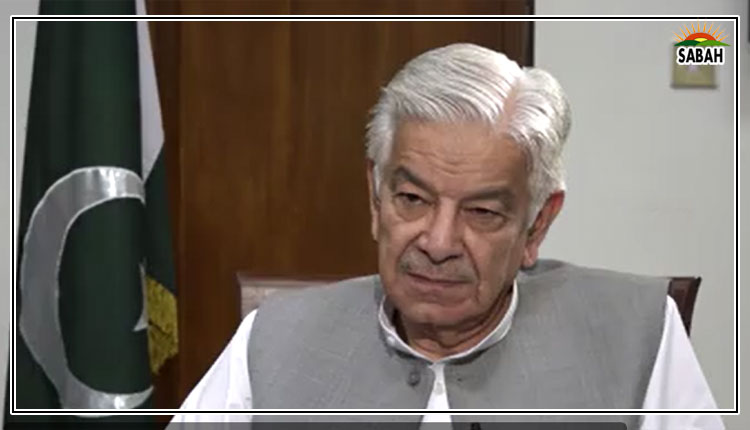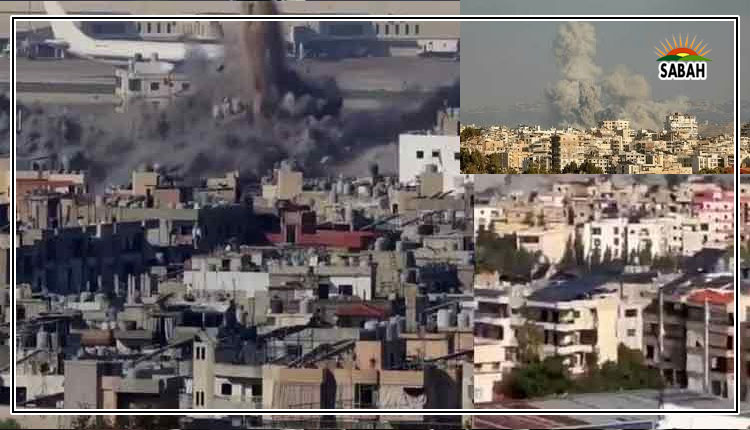Reclaiming the air we breathe…Sherry Rehman
Air pollution is not Pakistans latest killer, but it has certainly become a serial one. For a country with low emissions on a global scale, our record on air pollution is cause for action at scale. Conservative estimates suggest that 128,000 people die in Pakistan from air pollution annually.
Air quality is no Instagram filter one can swipe away. Even without extensive data, our ambient air at its worst represents a growing density of poison in the very air we breathe. The smog we see cloaking our cities is no film-noir caprice of the weather, but an index of a visible deterioration of air quality in many of our big cities. Lahore in particular regularly ranks as one of the most polluted cities in the world, while Pakistan scored third in the most polluted countries of the world in 2021.
This is not a good place to be. In winter, especially when the deadly smog rises, children cannot go to school on some days in Punjabs cities which get no sea breeze currents unlike coastal cities, the disease burden of respiratory illness rises, airports become paralyzed and motorways inoperable due to almost zero visibility. The air is not fit to breathe.
At a global level, the UN rates pollution as one of the triple planetary crises challenging humanity, and recent reports indicate that the damage it does to human health has been underestimated. According to the European Respiratory Journal, air pollution is estimated to have killed 6.7 million people globally in 2019. They also say that the impact of the climate emergency and human health has now become irreversible. Air pollution from domestic toxins, however, can be reduced appreciably.
What causes such high rates of air pollution in Pakistans cities? Air quality is not accurately measured in Pakistan, in fact quite patchily, wherever the meters are installed. But wherever it is formally measured the annual average PM2.5 exceeds the WHO standards in large margins. Particulate matter is a mixture of micro-solids or liquid pollutants, but size matters because the smaller they are, like the tenth of a hair strand in diameter, the more deadly their impact, because they easily enter the bloodstream via inhalation.
Key sources of air pollution in the country include vehicular and industrial emissions, open burning of waste, household emissions, as well as agriculture and land use emissions. Deforestation, climate change and a rising energy demand graph propel the continued and expensive reliance on fossil fuels, as opposed to renewable energy sources, as other push factors amplifying air pollution.
Growth presents its own challenges, especially with reference to the sheer numbers of people commuting within cities. Unchecked population growth has led to urban pressure, and an explosion in the number of vehicles crowding the streets. From 2007 at 5.2 million vehicles to 26.5 million in 2018, for instance, is a huge private transport burden. Typically, heavy traffic congestion and use of low-quality fuel contributes in spades to ambient pollution. Low-quality fuels produce hazardous pollutants such as carbon monoxide, hydrocarbons, NOx, lead and other particulate matter. Although Euro-2 fuel is banned in Lahore, the slow pace of switching to better grade fuels is adding to the mix.
Visible to the watery, naked eye is the pollution chugging out of unregulated smokestack chimneys in the country. The factories near and within Lahore, as well as Islamabad, Peshawar and Karachi, not to mention other industrial clusters, are notoriously slack in their environmental protection laws. Factories without nitrogen oxides (NOx) and sulphur oxides (SOx) scrubbers are often fined, but continue with their emissions, even if they have to turn to midnight production cycles to avoid black smoke detection. Smoke from brick kilns where coal, plastic, tyres and other raw material is burnt also adds to the mix of toxins in the air because they produce sulphur dioxide, carbon monoxide, carbon dioxide, nitrogen oxides, mercury, arsenic, chromium, lead and cadmium. Although the use of zigzag technology can change the emission mix, many kiln owners across Punjab are unable because of high costs to make that transition.
Crop residue burning has been making the news as a high pollutant, particularly in the Indian and Pakistani Punjab regions, because it emits a type of black carbon which has adverse effects on human health and the ecosystem. Farmers do this because of the perceived advantage of cost-efficiency and higher soil fertility. However, studies have shown that burning crops offers no wins, as water retention and soil fertility goes down by 25-30 per cent.
The latest Air Quality Life Index report by the University of Chicagos Energy Policy Institute should have raised alarm bells in Pakistan, because it said that the growing air pollution in the country may shorten life expectancy by at least seven years in our most polluted regions. The report also says that five of Pakistans cities, including Lahore, Faisalabad, Rawalpindi, Karachi and Saidu Sharif in Swat valley, rank among the top 30 cities that can benefit from accelerating carbon mitigation.
Although fighting air pollution and environmental protection standards are responsibilities now all located in the provinces as functions of devolved autonomous executive units, the federal government is often asked how such goals will get national attention. Internationally as well, countries are required to register their pollution control plans as national policies. So Pakistans National Clean Air Policy was identified as an urgent need and, after extensive provincial stakeholder consultation, was launched in March 2023. It is a roadmap to mitigate pollution and can be used by the provinces as a capacity document to trigger local action.
The NCAPs ambitions are entirely shaped by the need for urgent and do-able responses. The plan is neither based on complicated interventions, nor expensive new infrastructure. In fact, it is reasonably low-tech in identifying one priority action in each of the big five sectors with the aim of reducing air pollutant emissions across all major sources. The menu cascade is by no means exhaustive, but meant to put Pakistan on a pathway to reclaiming its air.
To start with, transport is seen as the one obvious sector for resetting things to make a material impact on lowering emissions. Simply by introducing regulations to fine-tune vehicles, so their emissions go down, with Euro 5 and 6 fuel quality standards made available and mandatory, a shift in reducing the sulphur and other pollutants from our vehicles can be made. Second, by enforcing emission standards for industries it is possible to tamp down on particulate matter emissions through the mandatory fitting of filters on high-polluting machinery. This involves higher governance by provincial EPASs but is well worth the investment in regulatory capacity.
Third, households are encouraged to reduce emissions by switching to low-emission cooking technologies. This means transitioning to improved efficiency biomass cookstoves, and cleaner fuels like LPG and electricity for cooking. Acting on this will have a double benefit of reducing air pollutants both at indoor and outdoor levels. The fourth intervention recommended in the NCAP is the prevention of open burning of Municipal Solid Waste. This intervention applies at landfill sites which require best practices to reduce the chances of fires breaking out at existing sites, and is really a core function of municipal governance. It may trigger waste-contractor migraines, but nothing more than that.
The fifth intervention relates to the prevention of burning of agricultural residue. Crop-producing areas in both Pakistan and India have to make this change, because seasonal smoke from both sides poisons transboundary air. This intervention also promotes alternative uses of agricultural residue for animal feed, for fuel, or their reincorporation into the soil.
The NCAP playbook is no rocket science. It advocates EVs, but doesnt count on all cars being prototypes of Tesla tomorrow. Electric vehicles are the future, as is clean-energy powered public transport, but the ethos is simple: while the combustion engine is on the road, it needs regulating. The scientific estimate of SLCP ( short-lived climate pollutant) inventory accounts suggests that these high-priority actions can reduce PM2.5 emissions by 38 per cent by 2030 compared to baseline scenarios. By 2040, these interventions can reduce emissions by 81 per cent.
Courtesy The News












